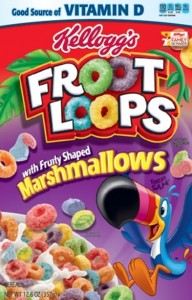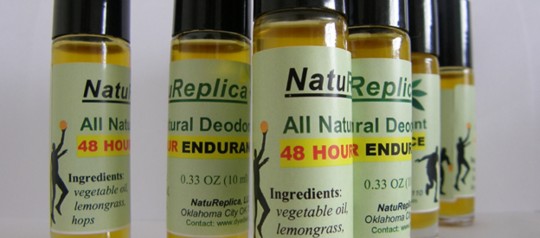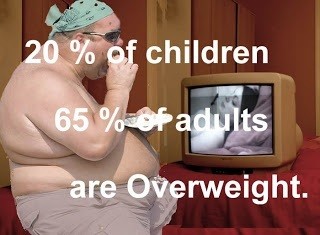End Food Dyes in America: Support and Sign Kellogg’s Petition
 This is a reprint of an important article by Dr. Alan Greene calling for signing the petition asking Kellogg’s to eliminate artificial food dyes from fruit snacks intended for American children. Indeed, for instance, Kellogg’s Fruit Loops contain four artificial colorants and BHT preservative. Dr. Alan Greene is the Founder of DrGreene.com, the KidsGlyphs iPhone app, and serves on the board of Healthy Child Healthy World. Recent similar petition demanding Kraft to stop using dangerous food dyes in our Mac & Cheese snacks was signed by nearly 290,000 supporters. Please read the below and support Kellogg’s petition for the sake of American children.
This is a reprint of an important article by Dr. Alan Greene calling for signing the petition asking Kellogg’s to eliminate artificial food dyes from fruit snacks intended for American children. Indeed, for instance, Kellogg’s Fruit Loops contain four artificial colorants and BHT preservative. Dr. Alan Greene is the Founder of DrGreene.com, the KidsGlyphs iPhone app, and serves on the board of Healthy Child Healthy World. Recent similar petition demanding Kraft to stop using dangerous food dyes in our Mac & Cheese snacks was signed by nearly 290,000 supporters. Please read the below and support Kellogg’s petition for the sake of American children.
Ending the use of food dyes is a position I’ve long supported. That’s why I’m thrilled to learn that over 208,000 individuals have told Kellogg’s to take artificial food dyes out of fruit snacks. Moms Latham Thomas and Erica Reid paired up with Healthy Child Healthy World to tell make it clear that food dyes weren’t welcome in fruit snacks. Parents and pediatricians would have an easier time helping kids make healthy food choices if food dyes were eliminated from foods or labeled, especially foods targeted at kids.
In 2008, the Center for Science in the Public Interest (CSPI) petitioned the FDA to ban the use of Yellow 5 and other artificial food dyes, and to require a label on foods containing artificial dyes in the interim. To support the CSPI petition, I joined a number of distinguished physicians and research scientists to send a letter to the FDA urging them to begin proceedings to end the use of artificial food dyes, which mounting evidence suggests are not safe for our children. We also wrote several members of Congress urging them to investigate this matter and to take action to protect our children from unnecessary harm.
But we didn’t get the results we hoped for. That’s why I am supporting the food dye petition to Kellogg’s, in the hopes that market pressure can help break the status quo of thoughtlessly keeping food dyes in foods.
There is no need for these chemical dyes because excellent natural food colorings exist, and are often already in use in the same products when they are sold in England. In the US, Whole Foods Markets and Trader Joe’s have taken a leadership role and already do not sell foods that contain artificial dyes.
Science makes it clear that food dyes are a health risk for children. Researchers at the University of Southampton studied over 1800 3-year-old children, some with and some without ADHD, some with and some without allergies. After initial behavioral testing, all of the children got one week of a diet without any artificial food colorings and without any chemical preservatives.
The children’s behavior measurably improved during this week. But was this from the extra attention, from eating more fruits and vegetables, or from the absence of the preservatives and artificial colors? To answer this question, the researchers continued the diet, but gave the children disguised capsules containing either a mixture of artificial colorings, or the preservative benzoate, or nothing – each for a week. The results were published in the June 2004 Archives of Diseases in Childhood. The weeks that children got either the hidden colors or the hidden chemicals, their behavior was substantially worse. This held true whether or not they had been diagnosed with hyperactivity, and whether or not they had tested positive for allergies – good news for parents of 3 year olds everywhere!
Removing artificial colors and preservatives from the diet was dramatically effective at reducing hyperactivity – somewhere between the effectiveness of clonidine and Ritalin, two common ADHD drugs. How much better to support children’s mood and behavior with healthy food, than to just turn to drugs! Some children may still need medicine, but with a healthy diet, we may be able to use lower doses. And it seems to me that this diet may be better for all children, whether or not they have behavior problems.
Companies that do business both here and in England have been able to adjust, and have taken voluntary action ahead of legislation. Mars has removed some or all of the artificial dyes from M&M’s, Skittles, and Starbursts – but not for American children. Kraft has removed artificial colors from Lunchables – but not for American children. Kellogg’s has removed the dyes from their fruit snacks, cereal and Pop-Tarts – but not for American children. A hint, McDonald’s uses caramel and strawberries and beet juice to color shakes and syrups in England; they use Yellow 5, Yellow 6, and Red 40 here.
Together we can put artificial dyes in time out! Please take a moment to sign the petition asking Kellogg’s to eliminate artificial food dyes from fruit snacks.
Do you try to feed your children a food dye-free diet?
Category: Food Dyes Exposure, Fruit snacks







Recently a group of 14 “experts” working on behalf of the FDA decided that artificial food dyes are safe to eat, despite studies showing that they may cause hyperactivity in children as well as other health problems, including cancer.
Oh yeah… Normally their “argument” is that “there is not enough scientific proof that artificial colors cause any harm.” How about enough scientific proof that artificial colors are NOT harmful? You know the answer…
Note: This is the “currently approved” list because, unsettling enough, the approval status does change. The following FD&C color additives are either no longer authorized or restricted for use – that’s right the FDA once thought these seven food dyes were “safe” but have since changed their minds: Green 1, Green 2, Red 1, Red 2, Red 3 (still used in food, but no longer in cosmetics or external drugs), Red 4, and Violet 1. In fact, if you look at food, drugs and cosmetics in total there are 91 different dyes that were once approved and are now no longer authorized or restricted for use. Others before us have petitioned the government to pull artificial food dyes off the shelves, but have unfortunately gotten nowhere. This is another reason why we have turned to the food industry to (hopefully) take the lead on making this positive change with natural dye alternatives instead. In the UK artificial dyes are still allowed for use, but require a warning label stating, “May have an adverse effect on activity and attention in children.” So, as a result, food companies have mostly switched to natural dyes in order to avoid slapping a warning label on their packages.
Right now there is a lot of discussion around the science of food dyes. Do artificial colors contribute to hyperactivity in kids? Are food dyes responsible for ADHD? Is it the government’s job to take these dyes out of our kids’ foods or is it ours?
Good questions! By chemical structure (azo dyes, thriphenylmethyl cations), artificial colors are oxidants which metabolize in your body to DNA-damaging radical intermediates and other potentially carcinogenic products. In the past, many other artificial colors of the similar structure have been found potent human carcinogens and were banned worldwide. Although it would be great to clearly answer all the toxicology questions it may take decades to do so. Unfortunately, in addition, there is significant corporate and political resistance that makes it even more daunting task. So, as you see, the government is reluctant to take a strong action. INSTEAD of waiting and being guinea pigs, we, the consumers, need to apply common sense: “Better safe than sorry” that is also known as Precautionary Principle http://en.wikipedia.org/wiki/Precautionary_principle Why should we wait when the “nanny state” tells us: Sorry, yes, artificial colors kill your children slowly?… The government all-times argument for taking NO action is: There is not enough scientific proof that artificial colors are harmful. Ridiculous! As a consumer, I have a counter question: Is there enough scientific proof that artificial colors are NOT harmful? You KNOW the answer. So WHY not to take action RIGHT NOW to protect yourself and your family???
To have the component stronger, peroxide submissions are increased.
Although getting Botox for your dentist is as simple as no means commonplace,
it’s simply another illustration showing how dentistry is beginning to change together with the times.
He or she promotes practices you need for prevention, to ensure that it couldn’t survive far too late for dental concern.